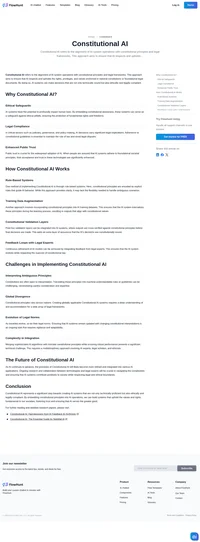What is AI-Based Student Feedback?
AI-based student feedback refers to the utilization of artificial intelligence technologies to provide evaluative insights and suggestions to students regarding their academic work. These systems employ sophisticated algorithms, often driven by machine learning and natural language processing (NLP), to analyze student submissions in real-time or near-real-time. The goal is to offer personalized feedback that enhances the student’s learning outcomes.
In recent years, the adoption of AI-based feedback systems has gained traction in educational settings, supported by advancements in AI technologies and a growing recognition of their potential to transform traditional feedback mechanisms. According to a 2024 study published in the “INTED Proceedings,” these systems are increasingly integrated into higher education to support self-regulated learning. The study highlights the importance of understanding student acceptance of AI feedback, which is critical to its successful implementation.
Flowhunt can automate evaluation of student work. Do you need to automate evaluation process in your school? Let’s get in contact!
Core Components:
- Artificial Intelligence: AI is the backbone that enables the automation of feedback. Through machine learning, AI systems can learn from past interactions and improve the feedback quality over time. The U.S. Department of Education’s 2023 report on AI and the future of teaching emphasizes the potential of AI to enable new forms of interaction and adaptivity in learning environments.
- Natural Language Processing (NLP): NLP allows AI systems to understand, interpret, and generate human language. In the context of student feedback, NLP is crucial for comprehending student submissions and providing coherent responses. As AI models become more sophisticated, their ability to process language has improved significantly, making them valuable tools for language-based assessments.
- Real-Time Feedback Mechanisms: AI systems deliver immediate feedback, aiding students in quickly identifying and rectifying mistakes in their work, which promotes a continuous learning process. This immediacy is particularly beneficial in large classrooms where timely feedback can be challenging for educators to provide on their own.
- Personalized Learning: AI-based feedback systems can tailor their responses according to the individual learning needs and styles of each student, enhancing the educational experience by addressing specific areas for improvement. The 2023 report from the U.S. Department of Education underscores the importance of AI in advancing equity by providing personalized learning opportunities that cater to diverse student populations.
How Does AI-Based Student Feedback Work?
AI-based feedback systems typically operate by analyzing student work through algorithms designed to detect patterns, errors, and areas for improvement. Here’s a breakdown of the process:
- Input Analysis: The system receives input in the form of written assignments, answers to quizzes, or spoken responses. It then processes this data to understand the content and context. This stage is crucial for ensuring that the feedback is relevant and aligned with the student’s intent.
- Pattern Recognition: Using machine learning, the system identifies patterns within the student’s work, such as common grammatical errors, logical inconsistencies, or gaps in understanding. The ability to recognize patterns enables the system to provide feedback that is both specific and actionable.
- Feedback Generation: Based on the analysis, the system generates feedback. This feedback can be corrective, offering suggestions for improvement, or reinforcing, highlighting strengths within the student’s work. Feedback generation is informed by the latest advancements in AI research, which aim to enhance the quality and relevance of the feedback provided.
- Adaptive Learning: The system adapts over time, learning from the types of feedback that are most effective for each student, thereby providing increasingly personalized responses. This adaptivity is a key feature that distinguishes AI-based feedback from traditional methods, as it allows the system to evolve alongside the student’s learning journey.
Examples of AI-Based Student Feedback in Action
- Writing Assignments: AI tools such as Grammarly and Turnitin analyze student essays to provide feedback on grammar, style, and originality. Recent studies have shown that these tools significantly enhance students’ writing skills by offering detailed and context-aware corrections.
- Language Learning: Platforms like Duolingo utilize AI to give instant feedback on user responses, helping learners understand pronunciation and grammar in real-time. The integration of AI in language learning has been praised for its ability to offer scalable and effective language education.
- STEM Subjects: Systems such as ALEKS provide personalized feedback in mathematics by assessing student responses and offering tailored exercises to address areas of difficulty. These systems have been shown to improve student performance in STEM subjects by providing targeted practice opportunities.
Use Cases
- Large Classrooms: In environments with large student bodies, AI-based feedback can significantly reduce the workload on educators by providing initial feedback, allowing teachers to focus on more complex or nuanced student interactions. Research from EPFL’s ML4ED Lab highlights the potential of AI to support educators in managing diverse and large classes efficiently.
- Distance Learning: For remote education settings, AI systems can provide continuous support and engagement for students, ensuring they receive timely feedback irrespective of geographical barriers. This is particularly relevant in the context of increasing demand for online education options.
- Skill Development: AI feedback can be instrumental in skill acquisition, such as coding, where platforms like CodeSignal offer feedback on coding exercises, helping learners to debug and refine their code effectively. The adaptability and precision of AI feedback make it a valuable resource for developing practical skills.
Benefits of AI-Based Student Feedback
- Efficiency: AI systems can process large volumes of student work quickly, providing feedback faster than human graders. This efficiency is crucial in educational settings where timely feedback can greatly impact learning outcomes.
- Consistency: Unlike human feedback, which can vary based on subjective factors, AI feedback is consistent and unbiased. The reliability of AI feedback makes it a trustworthy resource for students seeking objective evaluations of their work.
- Scalability: AI tools can handle the feedback needs of thousands of students simultaneously, making them ideal for large-scale educational settings. The scalability of AI feedback systems is particularly beneficial in institutions with limited teaching resources.
- Data-Driven Insights: These systems can provide educators with valuable insights into student performance trends, helping to inform instructional strategies and curriculum development. By analyzing large datasets, AI systems can identify patterns and trends that may not be immediately apparent to educators.
Challenges and Considerations
- Data Privacy: The use of AI for feedback involves handling sensitive student data. Ensuring data privacy and compliance with regulations like GDPR is crucial. The 2023 U.S. Department of Education report emphasizes the need for robust data protection measures to safeguard student information.
- Over-Reliance on Technology: There is a risk of becoming too dependent on AI systems for feedback, potentially neglecting the need for human interaction and judgment. Research from EPFL highlights the importance of maintaining a balance between AI and human feedback to ensure a holistic learning experience.
- Bias and Fairness: AI systems must be regularly tested and updated to prevent biases in feedback, ensuring fair treatment for all students. Ongoing research is focused on developing AI models that are transparent and equitable in their feedback provision.
- Integration with Existing Systems: Schools and educational institutions must ensure that AI feedback tools seamlessly integrate with their existing educational technologies and systems. The successful integration of AI in education requires careful planning and coordination to align with institutional goals and practices.
Practical AI Courses for your team
Of course! Please provide the content of the webpage you'd like me to summarize into a meta description.
Understanding Human in the Loop for Chatbots: Enhancing AI with Human Expertise
Enhance AI with Human in the Loop chatbots. Boost accuracy, reduce bias, and improve user trust with FlowHunt's innovative solutions.
The Art of Prompt Optimization for Smarter AI Workflows
Master prompt optimization for AI with FlowHunt. Enhance output quality, reduce costs, and streamline workflows. Try a 14-day free trial!



